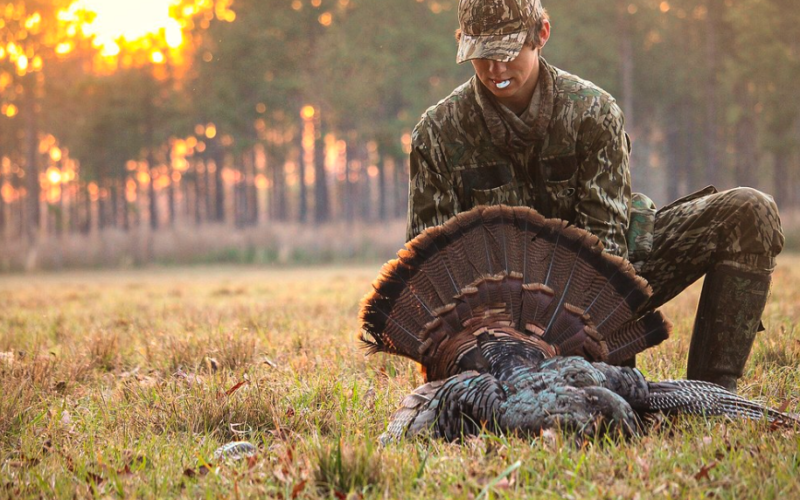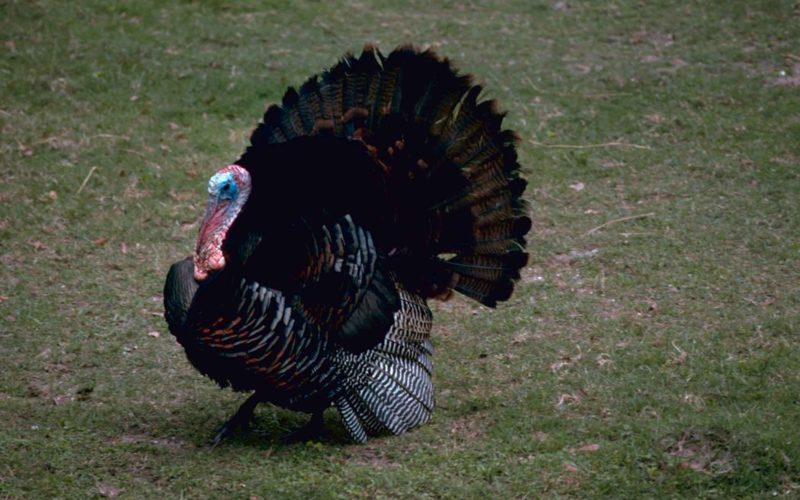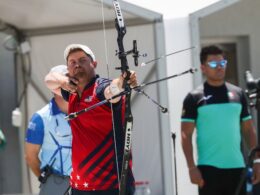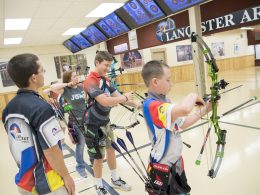Bowhunting for turkeys is a thrilling challenge that requires skill, patience, and the right preparation. Success comes from mastering your bow, using the right gear, and strategically scouting your hunting area to set up effective blinds and decoys.
In this guide, we’ll cover everything you need to know about turkey hunting with a bow, from proper bow setup and shot placement to essential gear. By the end, you’ll be ready to plan your 2025 spring turkey hunt with confidence.
Table of Contents
How to Set Up Your Bow for Spring Turkey Hunting
Remember a few key things when setting up your bow for spring turkey hunting:
You want to choose a bow with the right draw weight. A higher poundage bow is harder to keep at full draw. When bowhunting, you need to keep your bow at full draw for extended periods.
You need to pick the right arrow. Heavier arrows are better for penetrating thick turkey feathers and are easier to control.
Focus on your shooting form. A proper grip and stance will help you shoot more accurately.
In addition to choosing the right bow and arrow, practicing your shots is essential. You can do this by setting up a target in your backyard and taking time to shoot daily. When turkey hunting season arrives, the more comfortable you are with your bow, the better your chances of success.
Choose Your Broadhead Type
Many broadheads are available on the market, but not all are created equal. When choosing a broadhead for bowhunting turkeys, it is crucial to select one that is durable and will stand up to the rigors of hunting and meet the needs of the individual hunter. Choosing the type of broadhead you want to use is up to you and what you prefer.
Fixed blade broadheads work great for those shooting lower draw weight, a recurve, or a traditional bow. Turkeys do not require great penetration depths, but you do have to get past those dense feathers. When shooting a fixed blade, your blades do not open, allowing greater momentum and penetration to the vitals. Mechanical Expanding broadheads are an excellent option for turkey hunting.
You will leave a larger diameter in your wound size than with fixed blades. This is because the broadhead expands in flight, allowing you to hit more vitals with your shot. The broadhead is open before penetrating and slows it down. Due to it becoming slower on impact, it allows the arrow to remain lodged in the turkey instead of passing through.
What Gear You’ll Need for a Successful Bowhunt
When turkey hunting, there are certain items of gear that you will need to be successful. These include camo clothing, blinds, decoys, and calls.
Regarding clothing, you will need to wear camouflage to help you blend in with your surroundings. You also need to make sure that you are wearing layers so that you can adjust to the changing temperatures throughout the day.
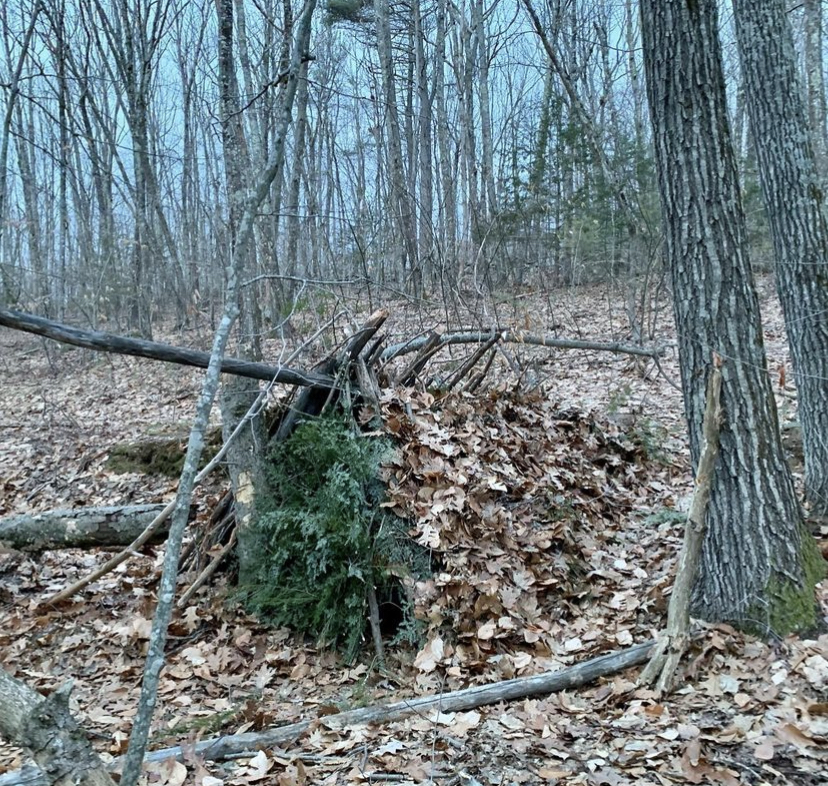
Blinds are essential because they help you stay hidden from the turkey’s sight. There are many different blinds available. Decoys can help attract turkeys to your location. Choose the ones that fit your hunting setup.
Calls can also help attract turkeys to your location. Many types of calls are available, find the ones you like and work for your application. Experiment with varying calls until you find the ones that work best for you.
Scouting Your Turkey Hunting Area
Scouting your turkey hunting area is vital for several reasons. First, you must find a good spot to set up your ground blinds. Second, scouting helps you determine where the turkeys spend their time. This information lets you know where to place decoys and how to set up your call sequence.
When scouting for a good spot to set up your blinds, look for an area with good visibility in all directions. You will also want a site free of obstacles like logs, rocks, and bushes. The spot you choose should also be far enough away from any roads or other areas where people are likely to be present.
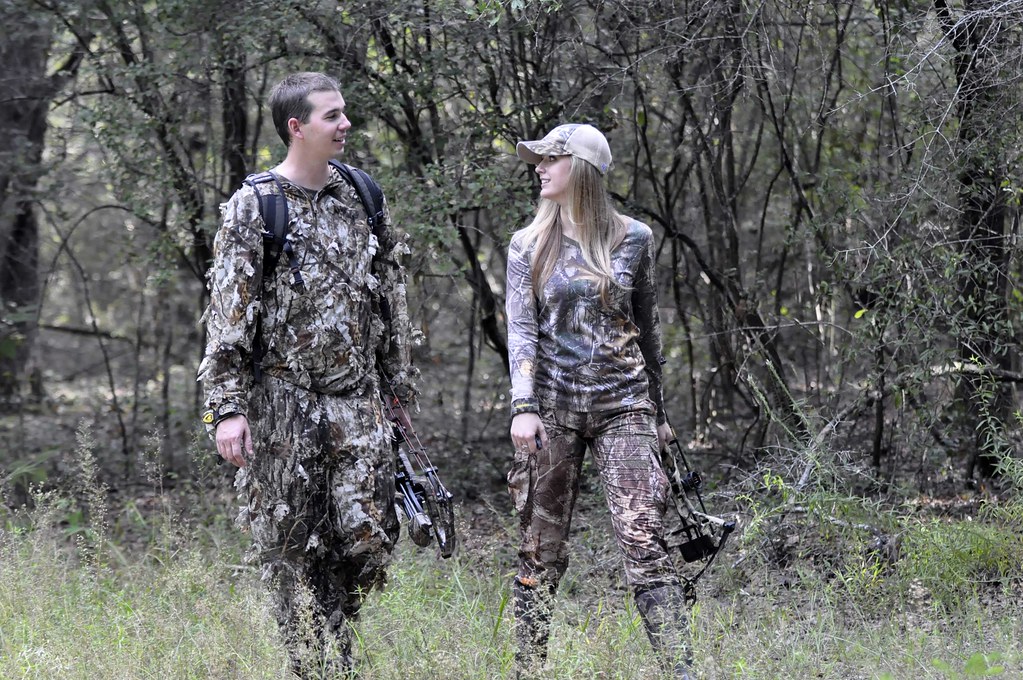
Once you have found an excellent spot to set up your blind, the next step is to start scouting for signs of turkey. Turkey signs include feathers, droppings, dusting, and scratching areas. These signs will help you determine where the turkeys spend most of their time. Look for these signs in likely places, such as trails at the edge of woods and open fields.
If you find a lot of turkey signs in one area, that is a good indicator that turkeys are using that spot regularly. Suppose you see different signs in one location; that is a good indicator that turkeys are roosting in that area. Knowing where turkeys are roosting helps you know when they will be active during the day and where they will be feeding.
Scouting your turkey hunting area takes time and effort, but it is well worth it if you want to be successful when turkey season arrives. By taking the time to scout now, you will be able to locate turkeys better when it matters most – during hunting season.
Best Practices For Blind Setup
When setting up your blind for spring turkey hunting, remember a few best practices:
- Choose a location at least 10 yards away from your decoys. This will help you stay hidden while remaining close enough to the action.
- Select a spot with good visibility in all directions. You don’t want to be ambushed by a turkey!
- Consider the sun’s position when choosing your blind location. You’ll want to be sure the sun is at your back so the turkeys won’t be able to see you.
- Set up your blinds early so the turkeys can get used to them. Doing so will help reduce your chances of spooking the birds.
Shot Placement For Bowhunting Turkey
You must be patient and wait for the turkey to turn broadside before taking your shot. The best place to aim is for the center of the chest, just behind the wing butts. This will allow you to hit the lungs and the heart, resulting in a quick kill.
Another good option is to aim for the neck. This shot is more complex, but if you are capable with your bow, it can be an excellent way to take down a turkey. When aiming for the neck, try to hit where the neck meets the body. This will sever the spinal cord and result in a quick kill.
If you cannot get a clean shot, it is better to pass on the opportunity than to wound the animal. Wounded turkeys can be tough to track and retrieve, and they often suffer needlessly before succumbing to their injuries. When in doubt, wait for another opportunity rather than risk an imperfect shot.
In Conclusion
Make sure to purchase your bowhunting gear well before turkey season begins. Equally important is ensuring that all your equipment is in top working condition. By taking these steps, you’ll set yourself up for a successful spring hunt. Take the time to inspect your gear, make any necessary upgrades, and get everything ready to maximize your chances in the field.
You can find a good assortment of archery and broadheads in the Everest Outdoor Marketplace. New products from new sellers are being added daily.

